Abstract
Tomb with lime-soil mixture barrier(LSMB) was constructed by the people from upper class people of Joseon Dynasty. The coffin of LSMB was surrounded by hard concrete barriers, being successfully protected from outside invasions until the archaeological excavation begins. The human remains were extremely preserved well, providing important information on the health and illness of the people of Joseon dynasty.
Recent investigation into human skeletons from LSMB in Yong-in city was another forensic anthropological case that was very meaningful to our research. During the examination on the elderly Joseon female bones, we discovered unusual saw-marks on the shaft of both tibiae. We could not find any osteological evidences suggestive of healed bone process. Considering archaeological and anthropological findings altogether, the occurrence time of saw-marks was considered to be perimortem period. However, as for why such a saw mark was made on the tibiae, we did not get any information about it. We expect that this report facilitate other researcher to do explore the usefulness of forensic anthropology examination on the similar human skeleton cases identified in various archaeological ruins.
References
1. Buikstra JE, Ubelaker DH. Standards for data collection from human skeletal remains. Arkansas archeological sur-vey research series No. 44. Fayetteville: Arkansas archeological survey;. 1994.
2. Shin DH, Oh CS, Kim Y-S, Hwang Y. Ancient-to-Modern Secular Changes in Korean Stature. Am J Phys Anthropol. 2012; 147(3):433–42.

3. Fujii A. On the relation of long bone lengths of lower limb to stature. Bulletin;. 1960.
4. Krogman WM, Iscan MY. The human skeleton in forensic Medicine. Charles C. Thomas. Illinois: Springfield;1986.
5. Lovejoy CO, Meindl RS, Pryzbeck TR, Mensforth RP. Chronological metamorphosis of the auricular surface of the ilium: a new method for the determination of adult skeletal age at death. Am J Phys Anthropol. 1985; 68(1):15–28.

6. Oh CS, Koh B-J, Yoo DS, Park JB, Min SR, Kim Y-S, et al. Academic dispute on the funeral rites of Joseon society is settled by ancient DNA analysis of a Korean mummy. Anatomical Records.(In press).
7. Kim Y-S. Kim MJ, Yu T-Y, Lee IS, Yi YS, Oh CS, et al. Bioarchaeological investigation of possible gunshot wounds in 18th century human skeletons from Korea. Int J Osteo-archaeol.DOI: 10.1002/oa.1301. (In press).
8. Kim Y-S. Oh CS, Lee SS, Kim MJ, Lee SD, Shin MH, et al. Anthropological Study on Human Skeletons from Joseon Tomb for Confirming Ryu Ja-Gwang, a Famous Historical Figure of Medieval Korea. Korean J Phys Anthropol. 2011; 24:85–95. Korean.
9. Ohkubo H. The Outline about the Criminal Law in Edo Era (1742∼1870). The Bulletin of Musashino Gakuin Graduate School. 2008; 1:7–15.
Fig. 1.
Excavation site in Bojeong-dong, Yongin-si where Joseon tomb was discovered. (A) Red dot in map of Korean peninsula indicates the site.(B) Archaeological Site.
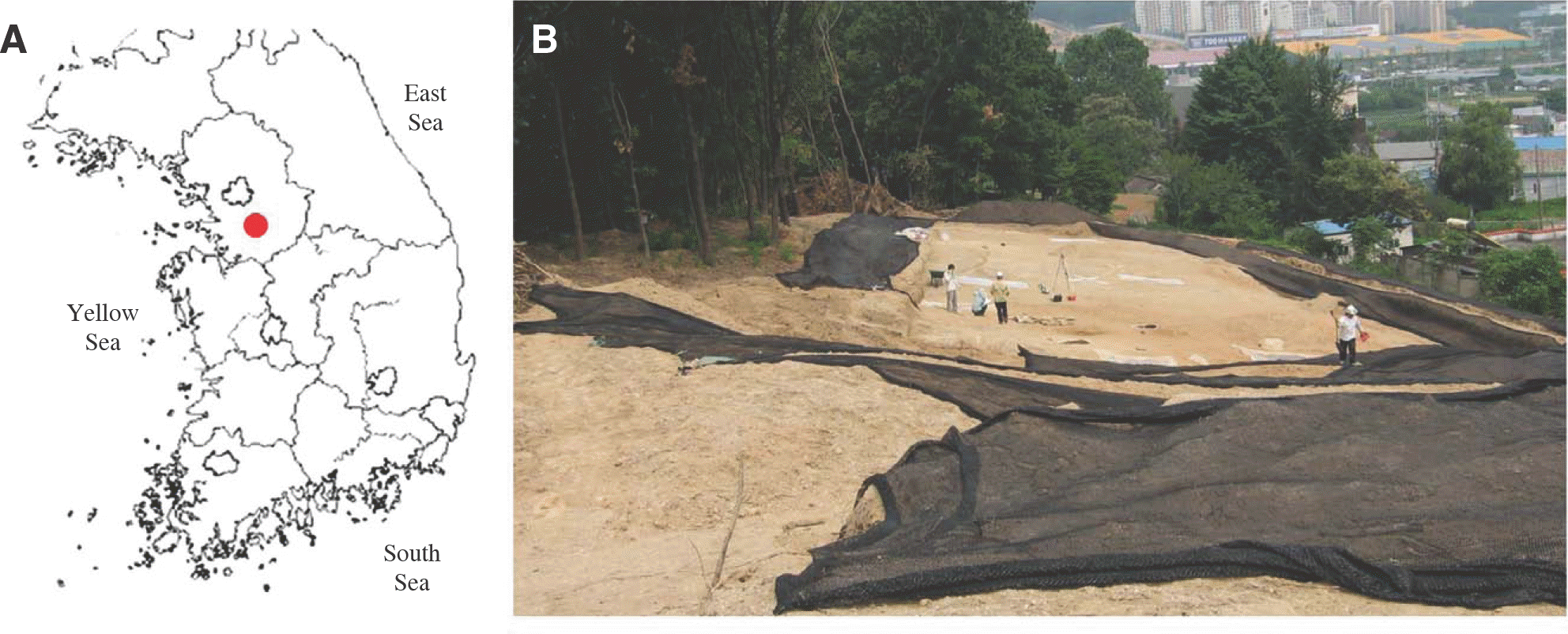
Fig. 2.
Skeletal remains in Joseon tomb #2 before collection. (A) Note the natural anatomical arrangement of bones. (B) Artificial deformity represented on the right tibia(indicated by red arrow) could be seen before gathering the bones in the field. (C) is the magnified image of (B). SK, skull; LSMB, lime soil mixture barrier; Vbr, vertebrae; Sc, sacrum; RFm, right femur; LFm, left femur; RTb, right tibia; LTb, left tibia.
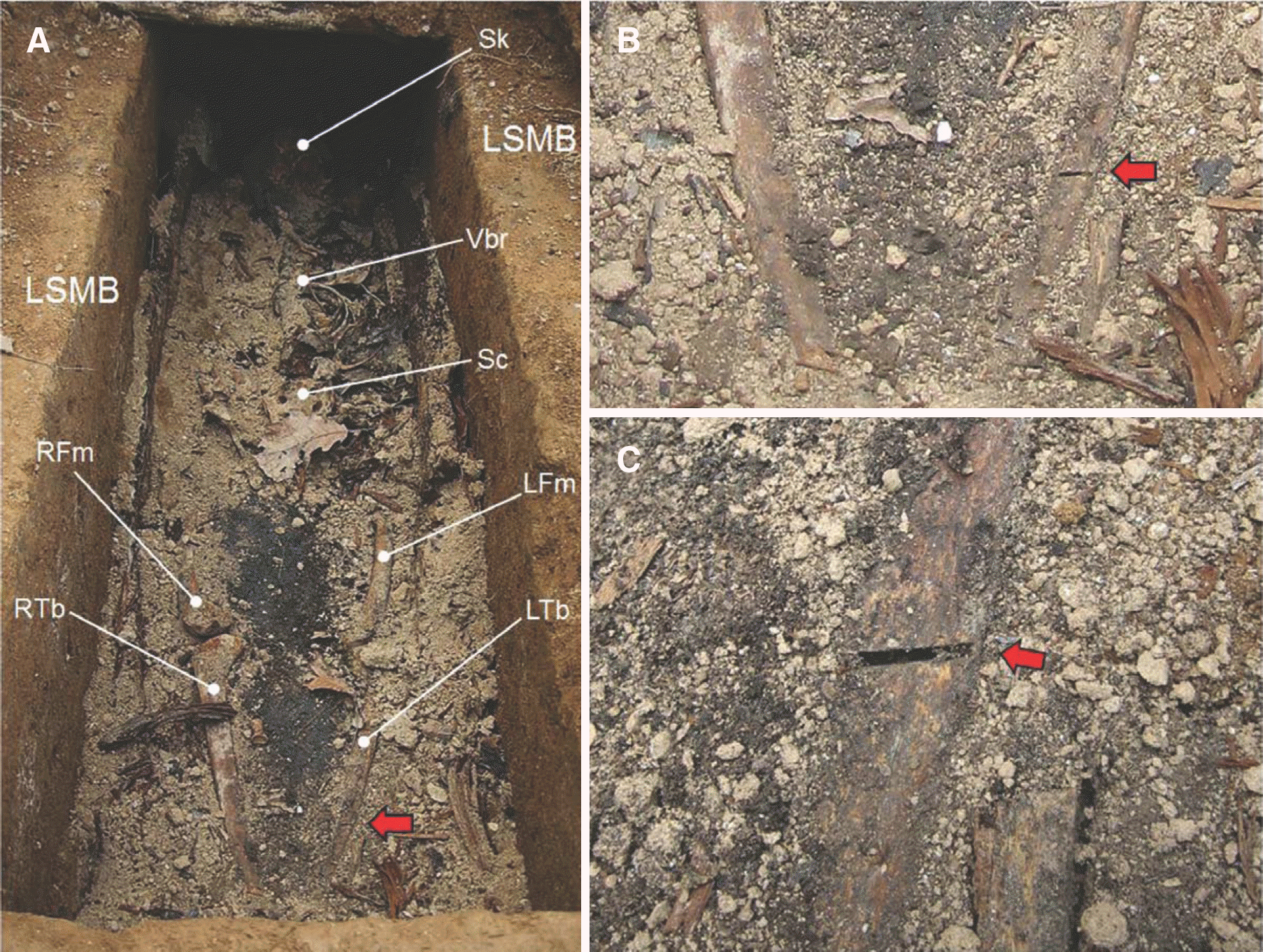
Fig. 3.
Entire appearance of right and left tibia showing the saw marks on its lower one-third of the shaft.
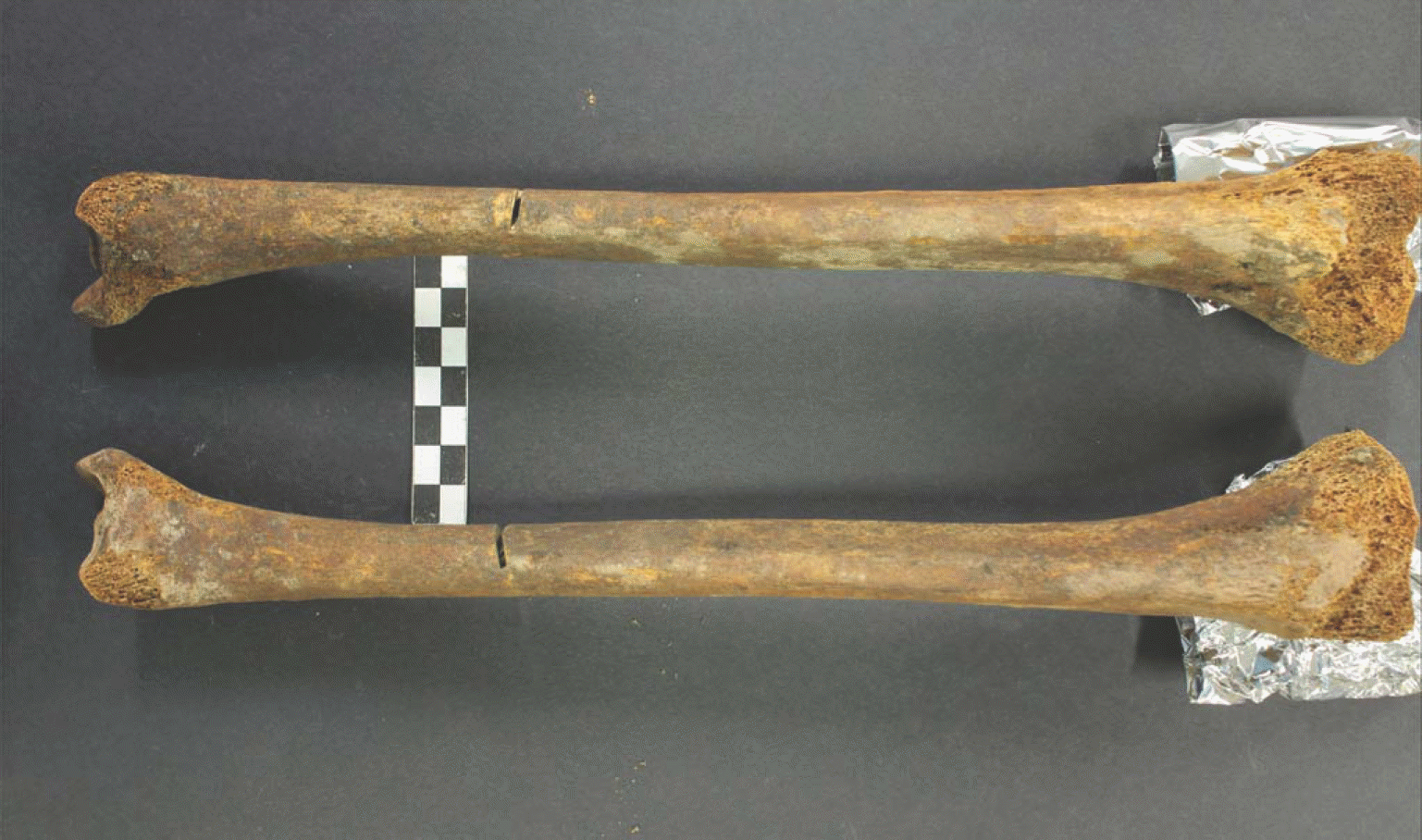
Fig. 4.
Close-up picture of the saw mark on the shaft of tibia and drawing of concept of explaining the kerf sign. Note the kerf be considered as protruded teeth of wobbling saw blade just like the alphabet ‘M' on the cut mark of bone.
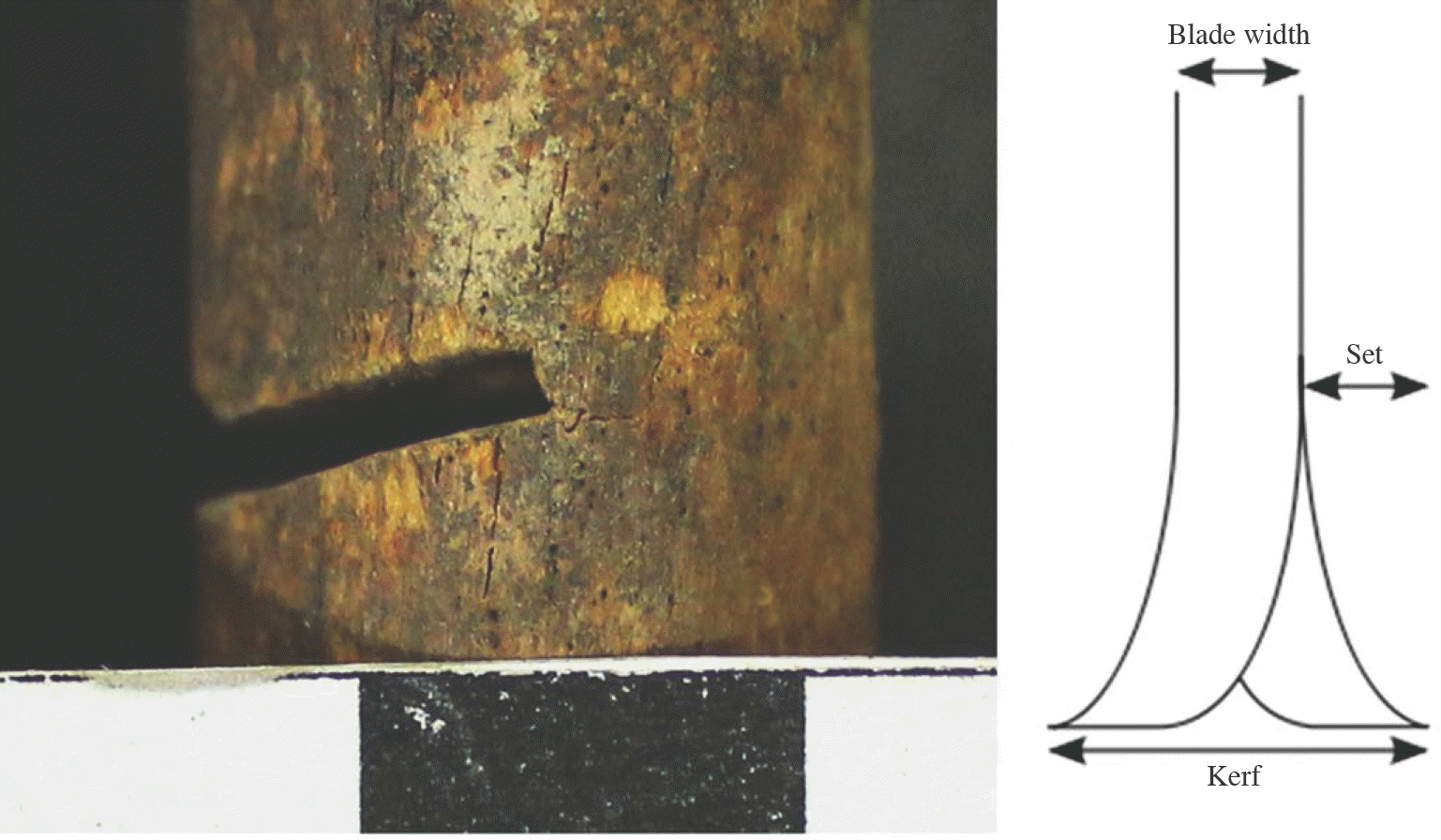
Fig. 5.
Hesitation-like mark on the surface of right tibia. Note the excoriation of cortical bone with more bright colors under the saw mark considering results of repeated sawing at first trial.
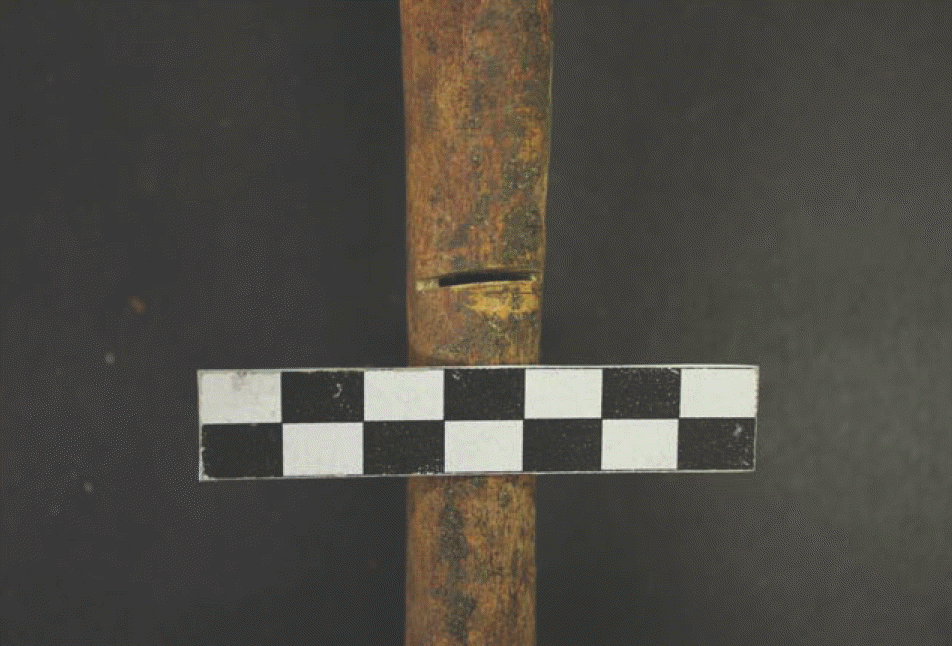
Table 1.
Osteometric data of skeletal remain in No. 2, Bojeong-dong, Yongin-si unit: mm
Table 2.
Sex estimation by the morphology of cranium and pelvic bone in No.2, Bojeong-dong, Yongin-si
Table 3.
Age estimation based on the morphology of hip bone in No.2, Bojeong-dong, Yongin-si
Table 4.
Metric description of saw mark at both tibia




 PDF
PDF ePub
ePub Citation
Citation Print
Print


 XML Download
XML Download